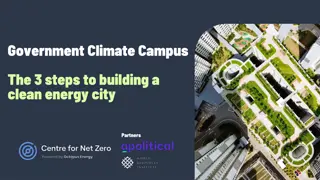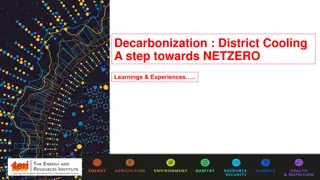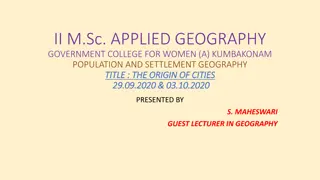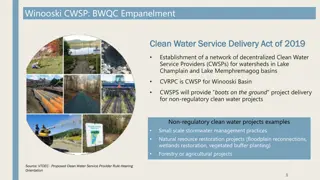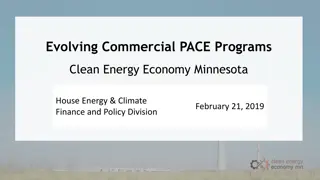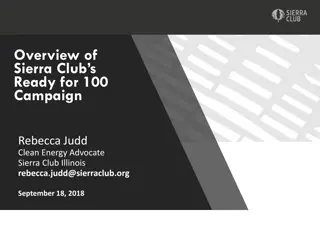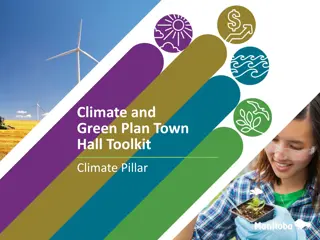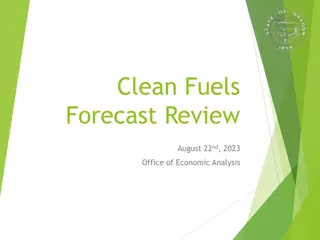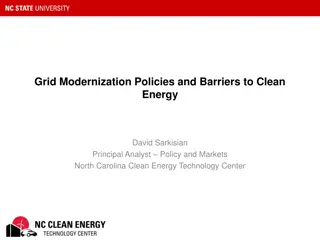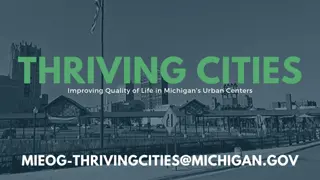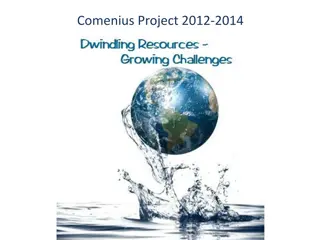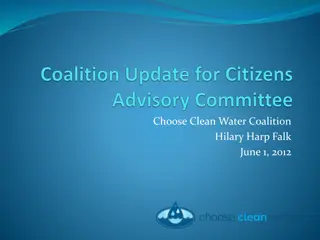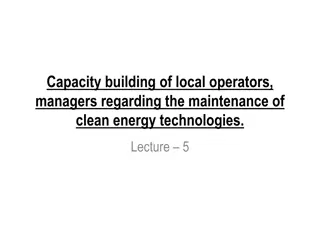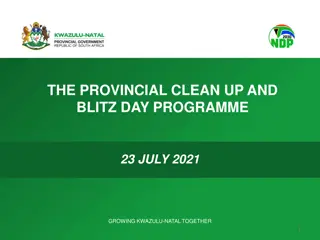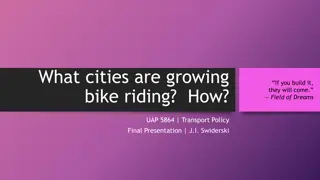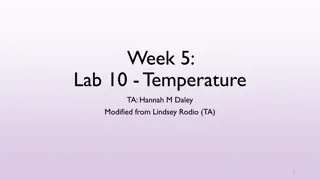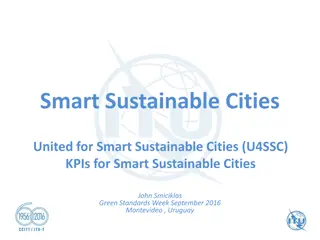Actions for Clean Cities: Strategies and Impacts
Initiatives like FAIRMODE, Eurocities, and the Covenant of Mayors focus on reducing air pollution in urban areas. Effective actions at national, regional, and local levels include agreements on emission reduction, energy-saving measures, green infrastructure, and the promotion of low-emission zones and walking/cycling. Assessing health impacts informs the implementation of measures like traffic reduction and the use of electric vehicles. Cities play a crucial role in creating healthier urban environments by influencing pollution sources and improving local health outcomes.
Download Presentation

Please find below an Image/Link to download the presentation.
The content on the website is provided AS IS for your information and personal use only. It may not be sold, licensed, or shared on other websites without obtaining consent from the author. Download presentation by click this link. If you encounter any issues during the download, it is possible that the publisher has removed the file from their server.
E N D
Presentation Transcript
Towards an Expert Panel on Clean Cities Rob Maas @ TFMM 2 May 2018 Recommended by the Saltsj baden-6 meeting, 19-21 March 2018
Several initiatives FAIRMODE Urban Partnership on Air Quality Eurocities HEAL Urbact Covenant of Mayors Current focus of assessments is on reducing the number of exceedances of AQLVs at hotspots For health impact assessments trends in average exposure of the urban population are more relevant
For reducing population exposure actions are needed at all levels Transboundary 1. Agreement on national reduction obligations & real life ELVs for cars, etc. 2. Increase energy saving, wind, solar, hydro power 3. Emission standards wood burning, existing ships, low-emission manure application National 1. Enforcement of ELVs: Euro-6 standards, IED, Agri, etc 2. Early scrapping/retrofitting old vehicles, ships, installations 3. Green taxes, green infrastructure Cities 1. Low emission zones, speed limits, zero-emission vehicles 2. Limit use of domestic wood burning, natural gas 3. Stimulate walking/cycling healthy city design
Typical health impacts of local measures local share in NO2-exposure is substantial local share in PM2.5 exposure is small 1. 2. 3. 4. 5. 6. 7. 8. 9. Less car traffic more walking & cycling Electric vehicles, electric busses & LDVs/HDVs ++ Low emission zones ( diesel ban?) Speed limits Traffic circulation plans, Trees Adaptation (photocatalytic paint, episode warning) 0 Ammonia reduction at regional level Other sources in the region (industry, transport) ++ Other local sources (shipping, domestic heating) ++/+ +++ + + +/- +++
Which local measures are effective ? Which local measures are effective ? . Net benefits 5 FP7- Transphorm
Example: how to improve local health? Burden of disease Contribution local sources Local contribution burden of disease UTRECHT 2015 PM2.5 44,0% 12% 5% NO2 24,3% 50% 12% EC 5,0% 50% 3% Ozone 0,5% 0% 0% Traffic safety 7,8% 80% 6% Noise 5,4% 50% 3% UV 4,7% 0% 0% Indoor air 8,2% 100% 8% Total 100,0% 37%
Which part can a city influence? (sources of EC-concentrations in Utrecht)
Reduced burden of disease in Utrecht in selected policy scenarios (in DALY) Car free 50% less cars Speed limits 100% EV LEZ 400 200 100 200 100 PM2.5 1000 1000 500 200 200 NO2 200 100 50 200 100 EC 500 250 250 Traffic safety 200 100 20 50 Noise Total Utrecht 2300 1150 620 1450 400 reduction in % 29% 14% 7% 18% 5%
To conclude Cities have a limited influence on local exposure national and international action are still needed, but what are the most cost- effective strategies? We need to exchange information Effective measures require that air policy measures (and funding) are embedded in spatial planning, energy policy and agricultural policy, how to include health benefits of active mobility and green routes? local information needed How to best exchange local, national and international knowledge? Who to involve? 28/29 June FAIRMODE/TFIAM workshop on assessment of health impacts of local air quality measures in Talinn



